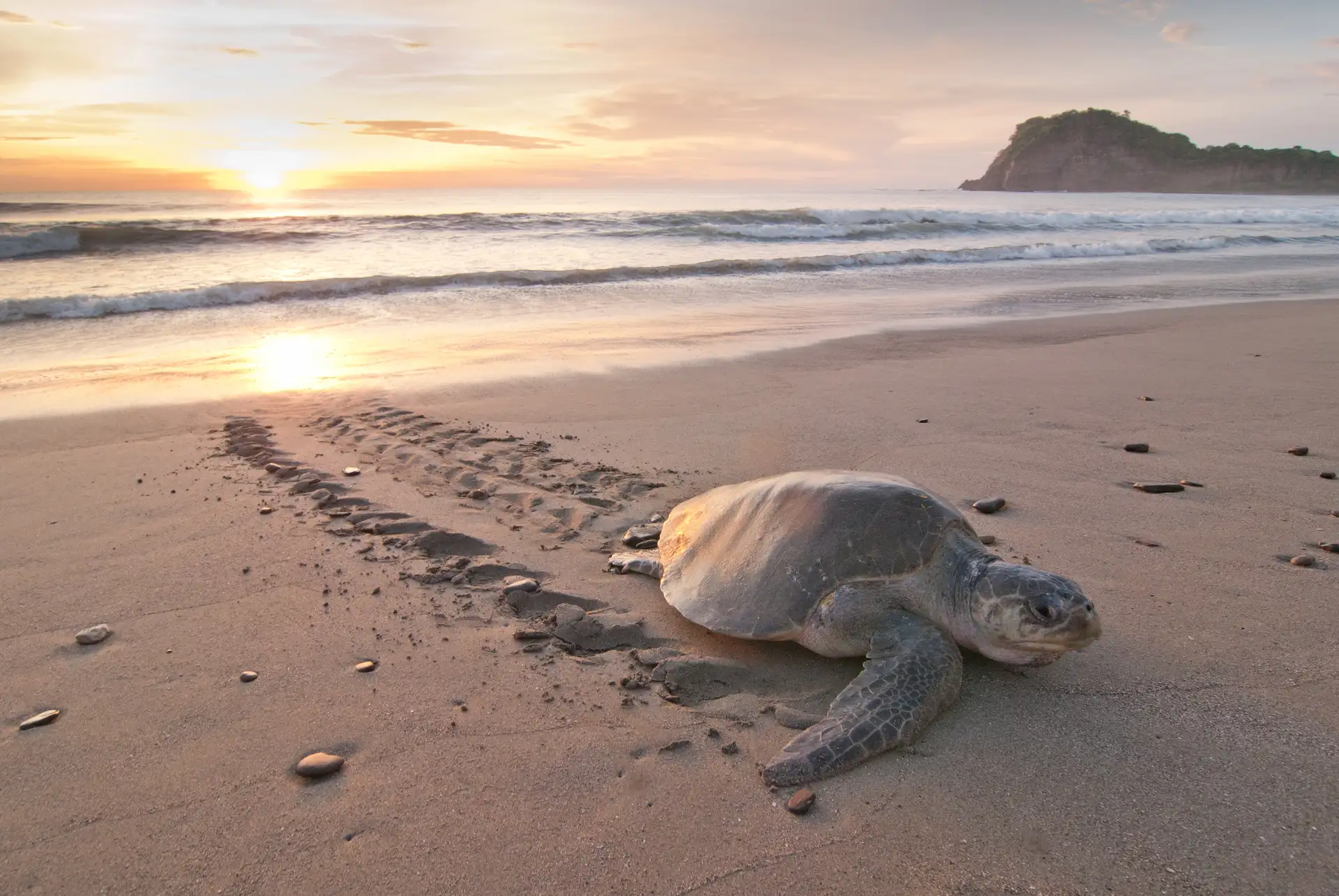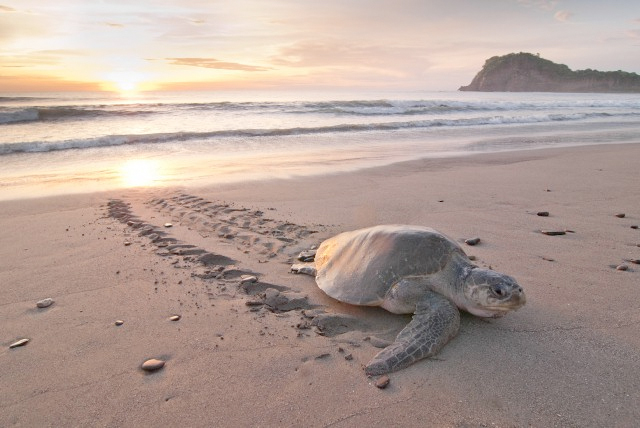
Wildlife Fact Sheet
Olive Ridley Sea Turtle
Lepidochelys olivacea
About
Like their cousins, the Kemp’s ridley, Olive ridley sea turtles are relatively small sea turtles. They can grow up to 2.5 feet and weigh about 100 pounds. In comparison, the leatherback turtle, the largest sea turtle, can grow to more than seven feet and weigh 1,500 pounds.
Olive ridleys are small in size, but great in numbers—they’re considered the most abundant of all the sea turtles. There are an estimated 800,000 nesting females in the wild. However, these numbers pale in comparison to their historic abundance, which reached more than ten million in the Pacific Ocean alone. Olive ridley sea turtles were harvested for their meat, eggs and skin, leading to large decreases in their population.

Did You Know?
Olive ridley sea turtles get their name from their olive-colored shell. Olive ridley sea turtles don’t get their distinctive color until adulthood; juveniles are dark grey.
Get Ocean Updates in Your Inbox
Sign up with your email and never miss an update.
Status and Conservation
Olive ridley sea turtles have unusual nesting habits. For other sea turtle species, mothers file on to nesting beaches one by one over the course of nesting season, which can last months. Olive ridley sea turtles, like their Kemp’s ridley cousins, prefer to nest in groups. When it comes time to nest, they will gather off the beaches in groups, then come onshore all at once. They can number in the thousands. This event is known as an arribada, which means “arrival” in Spanish.
Even though arribadas seem like big parties, traveling in such numbers can put Olive ridley sea turtles at risk. Their populations are threatened by people capturing eggs and adults, especially during an arribada. Like other sea turtles, Olive ridley sea turtles are also threatened by marine debris—they can become entangled in fishing nets, accidentally ingest balloons or plastic bags and more. It’s so important to reduce the amount of plastic pollution entering the ocean so Olive ridley sea turtles have a healthy ecosystem in which to live.